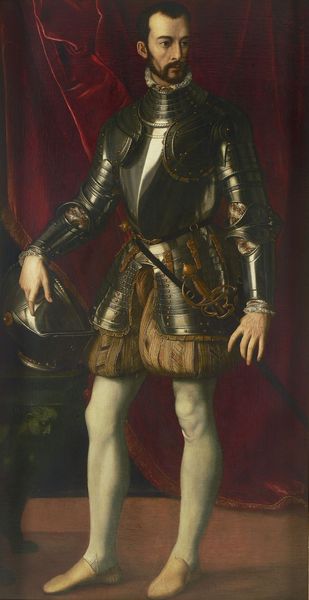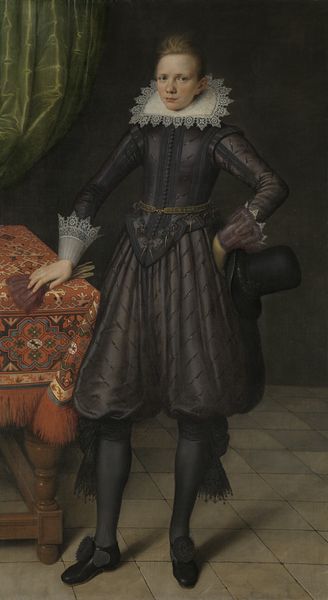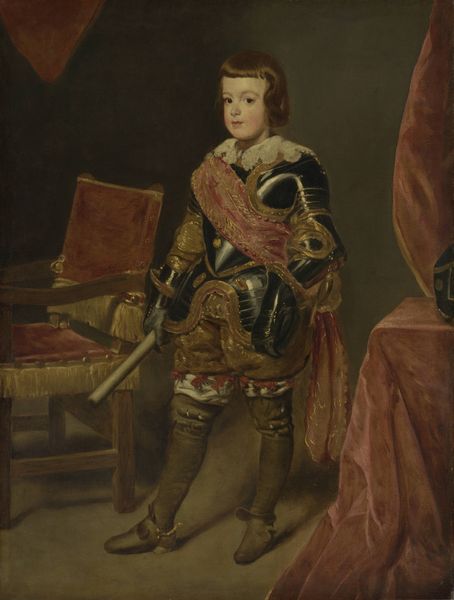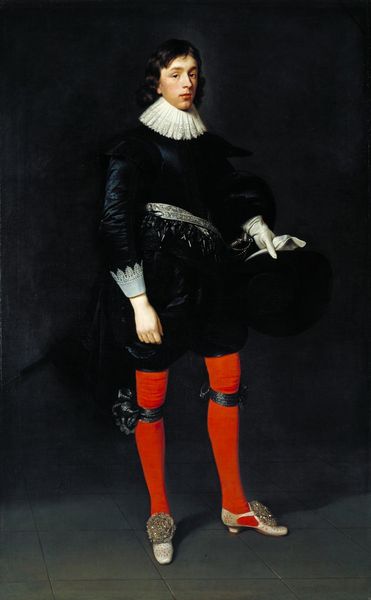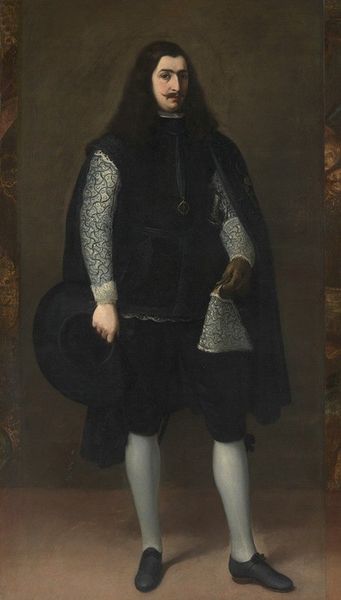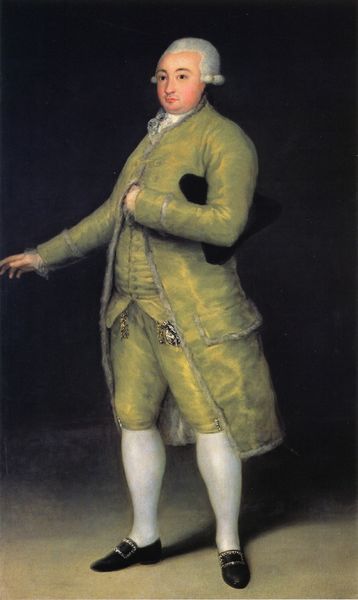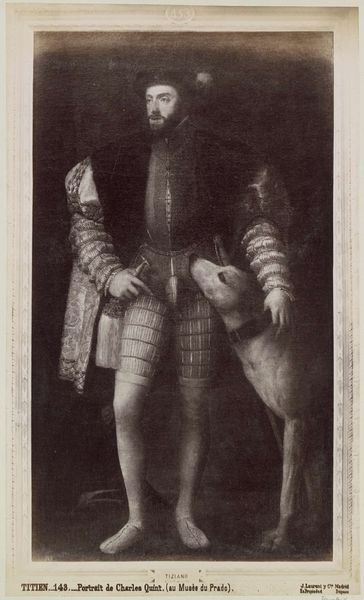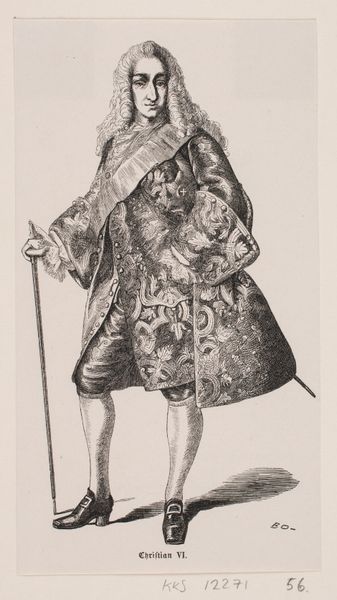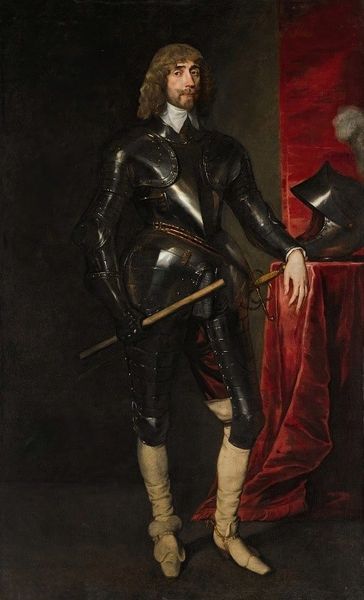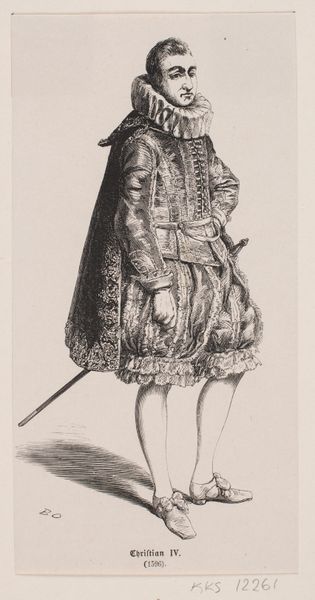
painting, oil-paint
#
painting
#
oil-paint
#
mannerism
#
history-painting
#
italian-renaissance
Dimensions: overall: 188.6 x 102.2 cm (74 1/4 x 40 1/4 in.) framed: 214.6 x 128.3 x 7.9 cm (84 1/2 x 50 1/2 x 3 1/8 in.)
Copyright: National Gallery of Art: CC0 1.0
Editor: Here we have what's believed to be a portrait of Prince Hercule-François, Duc d'Alençon, dating to 1572. Painted in oil, the artist, unfortunately, remains anonymous. I'm struck by the elaborate, almost theatrical costuming; how would you interpret this representation within its historical moment? Curator: The flamboyant attire is definitely key. Consider the context: France in 1572, a society obsessed with appearances, courtly ritual, and consolidating power after religious turmoil. Hercule-François' clothing and bearing broadcasts his status; note how the artist depicts the textures and fabrics, showcasing his wealth and refinement. It's less about the individual, and more about representing an ideal of nobility. But look closer, what details suggest tensions or complexities? Editor: I guess his serious expression hints that it’s not just a display of power, there’s a somber element too, which maybe hints at something else at play within French nobility in the late 16th century? Curator: Precisely. Think about what was happening at the time; the St. Bartholomew's Day Massacre had occurred that very year, deeply shaking the political landscape and personal aspirations of French nobles, including this young man and his role as a prince, in turbulent and unpredictable political climates that permeated courtly life at that time. In many ways the painting itself performs power in an effort to overcompensate for instability. Now consider the role portraiture had during that period. Editor: So the painting becomes part of the complex social and political theater of the time; power play. The perfect garments, though perhaps ostentatious to today's standards, represent strategies to broadcast political ambition and legitimacy during an extremely violent era. Curator: Exactly, it's a potent image intended to be viewed, decoded, and acted upon. Editor: Fascinating! I came in seeing an unusual outfit; now, I realize it reflects complex negotiations and cultural aspirations.
Comments
No comments
Be the first to comment and join the conversation on the ultimate creative platform.
